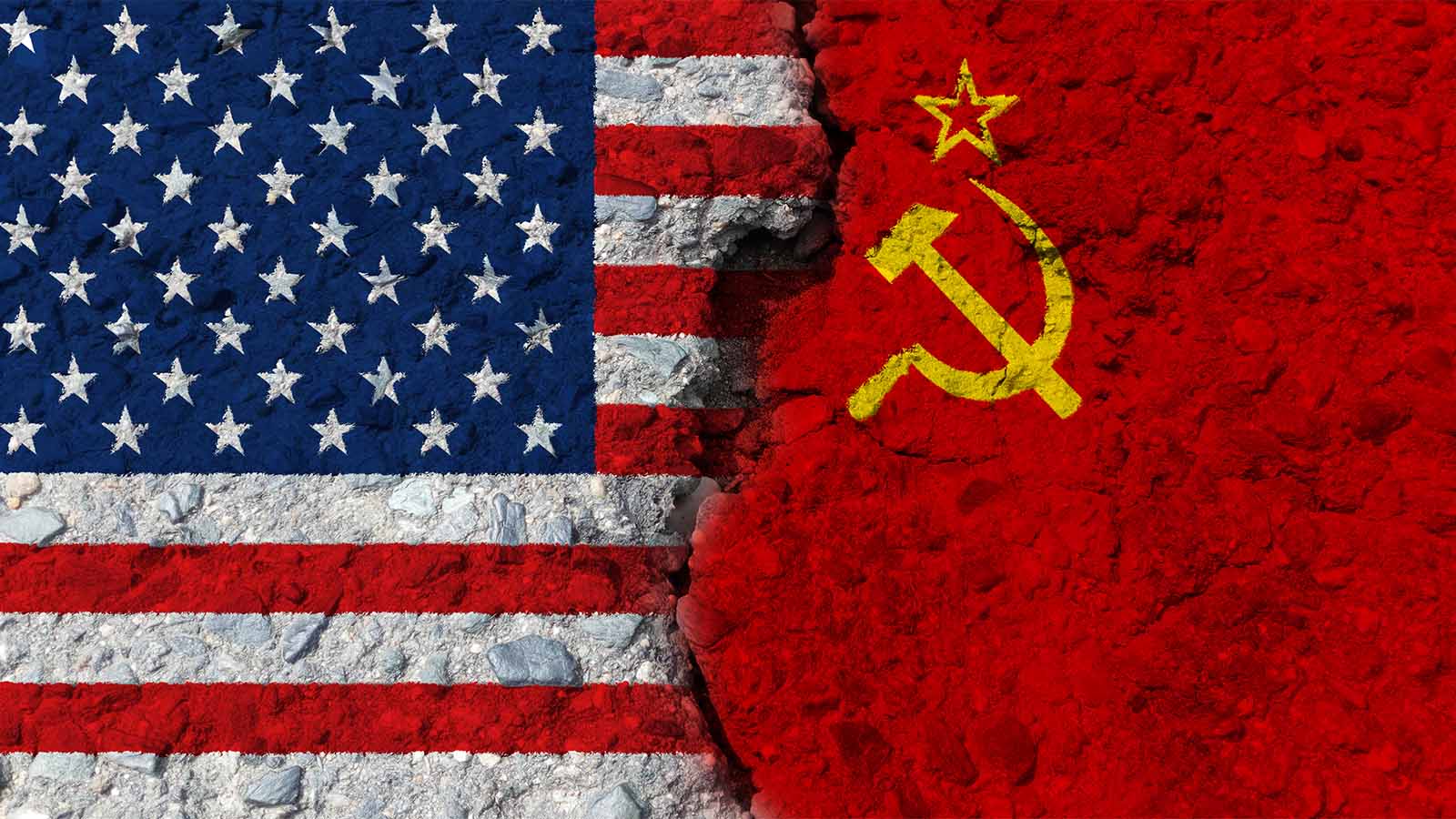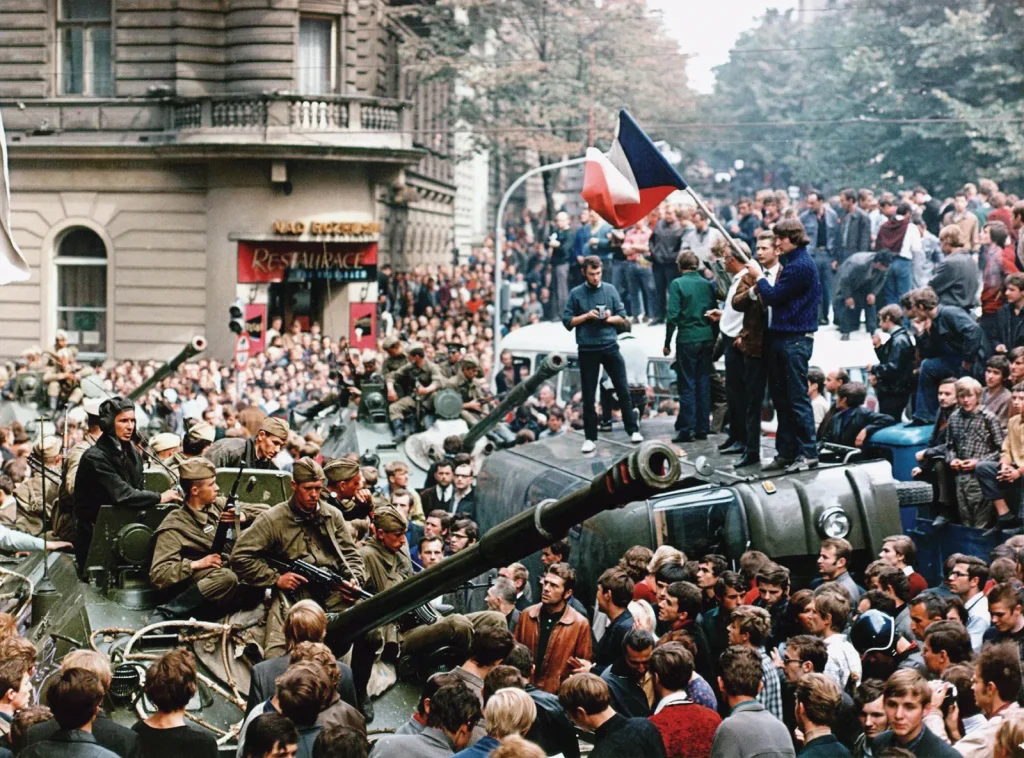
If you’ve ever wondered how we ended up with the world order we see today, there’s no better place to start than the Cold War timeline. It was a decades-long power struggle between the United States and the Soviet Union, two nuclear-armed giants with opposing ideologies—capitalism and communism. Though no direct war broke out between the two, their rivalry shook every continent, shaped global alliances, and triggered conflicts that still impact international politics.
To truly understand the roots of modern diplomacy, defense, and even tech races, you need to look at how the Cold War unfolded—event by event, year by year. Here’s a detailed breakdown that makes sense of it all.
Table of Contents
Cold War TimelineTable: Quick Look
| Year | Event | Summary |
| 1945 | Yalta Conference | Allies meet to discuss Europe’s post-WWII future, revealing early East-West tension. |
| 1947 | Truman Doctrine | U.S. commits to stopping the spread of communism globally. |
| 1948–49 | Berlin Blockade/Airlift | Soviets block West Berlin; U.S. supplies it by air for 11 months. |
| 1950–53 | Korean War | North Korea (with Soviet/China support) invades the South, prompting U.S. response. |
| 1957 | Sputnik Launched | USSR puts the first satellite in space, starting the space race. |
| 1961 | Bay of Pigs Invasion | Failed U.S. attempt to overthrow Cuba’s Fidel Castro. |
| 1962 | Cuban Missile Crisis | Nuclear standoff between the U.S. and USSR over missiles in Cuba. |
| 1968 | Prague Spring | Czechoslovakia’s liberal reforms crushed by Soviet tanks. |
| 1972 | SALT I Agreement | U.S. and USSR agree to limit certain nuclear weapons. |
| 1979 | Soviet Invasion of Afghanistan | USSR intervenes to support communist government, reigniting Cold War tensions. |
| 1985 | Gorbachev’s Reforms Begin | USSR leader starts economic and political reforms (glasnost, perestroika). |
| 1989 | Fall of Berlin Wall | East and West Berlin reunite; Cold War control begins to crumble. |
| 1991 | Collapse of Soviet Union | USSR dissolves, officially ending the Cold War. |
1945–1949: The Early Sparks
After World War II, the world was split into two opposing visions. The U.S. and its allies wanted democratic governance and open markets, while the Soviet Union pushed for communist expansion.
Things escalated quickly. At the Yalta Conference (1945), it was already clear that cooperation would be difficult. In 1947, the Truman Doctrine declared U.S. opposition to communist influence anywhere in the world.
Then came the Berlin Blockade in 1948. The Soviets cut off all road and rail access to West Berlin, trying to force the Allies out. In response, the U.S. and U.K. launched the Berlin Airlift, supplying food and fuel for nearly a year. It was an early test—and proof—that the West wouldn’t just step aside.
1950–1959: Proxy Wars Take Over
The Cold War turned hot through proxy wars, where local conflicts became fronts for superpower competition.
The Korean War (1950–1953) saw U.S. and U.N. forces defend South Korea after the North invaded. Backed by China and the USSR, North Korea aimed to unify the peninsula under communism. The war ended in a stalemate but showed that Cold War rivalry could erupt into real bloodshed.
In 1957, the USSR shocked the world with Sputnik, the first artificial satellite. While it was a scientific breakthrough, it also signaled that the Soviets were winning the tech race. This triggered heavy U.S. investment in science, leading to the formation of NASA.
1960–1969: Brink of Disaster
The 1960s were dangerous, with the world coming the closest it ever came to nuclear war.
In 1961, the Bay of Pigs Invasion failed spectacularly. The U.S. had hoped to remove Castro from Cuba but instead strengthened his ties with the USSR.
The Cuban Missile Crisis (1962) was the Cold War’s most dangerous moment. Soviet missiles in Cuba were aimed at U.S. cities. After a tense 13-day standoff, both sides pulled back. The U.S. removed missiles from Turkey, and the USSR dismantled its Cuban arsenal.
Across the globe, Cold War influence touched other nations. In Czechoslovakia, the Prague Spring (1968) brought hopes for liberal reforms. But when those reforms threatened Soviet control, tanks rolled in and crushed the movement. It was a message: rebellion inside the Eastern Bloc wouldn’t be tolerated.
1970–1979: A Short Breath, Then More Fire
The SALT I Agreement in 1972 marked a rare diplomatic win. It limited strategic arms and offered a sense of balance. But it didn’t last.
By 1979, things flared up again. The Soviet invasion of Afghanistan was seen by the U.S. as an aggressive move to expand communist influence. In response, the U.S. backed Afghan resistance fighters and boycotted the 1980 Moscow Olympics.
The brief period of reduced tension gave way to renewed confrontation. The Cold War timeline was once again marked by escalation.
1980–1989: Tipping Point
The 1980s opened with Solidarity in Poland, the first independent labor union in the Eastern Bloc. Though suppressed early on, it planted the seeds of resistance across communist states.
In 1983, Reagan launched the Strategic Defense Initiative, aiming to build a space-based missile shield. Critics called it “Star Wars,” but it was a signal: the U.S. wouldn’t slow down.
The real shift came with Mikhail Gorbachev’s rise in 1985. His policies—glasnost (openness) and perestroika (restructuring)—were aimed at fixing a crumbling economy and repressive political system. But they also opened the door for dissent.
By 1989, East Germany couldn’t hold back the tide of change. The Berlin Wall fell, and with it, Soviet control over Eastern Europe began to collapse. Within months, multiple Eastern Bloc nations transitioned to democracy.
1990–1991: The End of an Era
In 1990, Germany reunified—something once unthinkable. A year later, the Cold War officially ended.
The Soviet Union dissolved in December 1991, splitting into 15 independent republics. Gorbachev stepped down. The Cold War timeline came to a close without a treaty, but its legacy would last long beyond the last missile being dismantled.
Impact That Still Echoes Today
Even though it’s over, the Cold War still affects international politics, military policy, and how nations interact.
- Military Buildups: Many countries still carry Cold War-era nuclear stockpiles and defense systems.
- Global Alliances: NATO, formed during the Cold War, continues to influence European and transatlantic defense strategies.
- Regional Instability: Conflicts like those in the Middle East and parts of Africa have roots in Cold War proxy support.
The battle for ideological dominance may be over, but its structure—economic influence, tech supremacy, and military readiness—still guides superpowers today.
Wrapping Up
When you look at the Cold War timeline, it’s more than just a historical record—it’s a blueprint of how power, ideology, and global interests shaped the modern world. Every event, from Sputnik to the fall of the Berlin Wall, built toward an ending no one could predict at the time: the peaceful collapse of one of the world’s two great powers.
Understanding this timeline isn’t just about history. It’s about seeing the roots of today’s politics, alliances, and global strategies. The Cold War might be over, but its imprint is still all around us.
Latest Articles
 How Window Tinting Affects Driver Visibi…In TechnologyApril 11, 2025Introduction: Beyond Style — The Functional Side of […]
How Window Tinting Affects Driver Visibi…In TechnologyApril 11, 2025Introduction: Beyond Style — The Functional Side of […] Nick Sandmann Net Worth, Biography, Heig…In BiographyApril 11, 2025Young Nick Sandmann, catapulted into the media […]
Nick Sandmann Net Worth, Biography, Heig…In BiographyApril 11, 2025Young Nick Sandmann, catapulted into the media […] Patrizia Gucci Net Worth, Early Life, Fa…In Biography, other newsApril 3, 2025Patrizia Gucci has an estimated net worth of $16 […]
Patrizia Gucci Net Worth, Early Life, Fa…In Biography, other newsApril 3, 2025Patrizia Gucci has an estimated net worth of $16 […] Laila Ali Net Worth, Early Life, Educati…In Other NewsApril 3, 2025Laila Ali is a former professional boxer who has an […]
Laila Ali Net Worth, Early Life, Educati…In Other NewsApril 3, 2025Laila Ali is a former professional boxer who has an […] How Mystuff 2.0 Makes Work Easier for Mc…In TechnologyApril 3, 2025If you work at McDonald’s, chances are you’ve already […]
How Mystuff 2.0 Makes Work Easier for Mc…In TechnologyApril 3, 2025If you work at McDonald’s, chances are you’ve already […] Instagram Password Finder: Take Control …In How ToApril 3, 2025Forgotten your Instagram password? Well, it happens to […]
Instagram Password Finder: Take Control …In How ToApril 3, 2025Forgotten your Instagram password? Well, it happens to […] Social Security Fairness Act Benefits Ro…In LawApril 2, 2025If you’ve worked in public service, chances are your […]
Social Security Fairness Act Benefits Ro…In LawApril 2, 2025If you’ve worked in public service, chances are your […] Creating Dynamic Content Calendars Withi…In TipsMarch 27, 2025When you’re syndicating content for different […]
Creating Dynamic Content Calendars Withi…In TipsMarch 27, 2025When you’re syndicating content for different […]
stopie.com is a participant in the Amazon Services LLC Associates Program, an affiliate advertising program designed to provide a means for sites to earn advertising fees by advertising and linking to Amazon.com.
Clicking on an Amazon link from stopie.com does not increase the cost of any item you purchase.
We will only ever link to Amazon products that we think our visitors may be interested in and appreciate learning more about.


